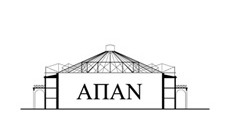Kondoleon, Antioch (2000)
[Bibliography]
Susan Boyd, Christine Kondoleon, Michael Maas, Fikret Yegul et al., Antioch, the Lost Ancient City. With “Catalogue of the Exhibition”, Christine Kondoleon (ed.) (Princeton University Press in association with the Worcester Art Museum, Princeton 2000)
This lavish exhibition catalog brings to life Antioch, the magnificent city known for its Hellenic culture and luxurious way of life, once ranking with Rome, Alexandria, and Constantinople as one of the great metropolises of the Roman and early Christian world. Located in what is now southern Turkey, Antioch, founded by the Macedonian King Seleucus I Nicator, was the capital of Ancient Syria, a vital marketplace at the crossroads between East and West. It was here that St. Paul preached to the first gentile community to be called ‘Christians’ and where a Greek-speaking Jewish culture flourished alongside Greek, Roman, Egyptian, and Near Eastern cults. A large middle-class shared in the wealth and culture of the city, and art abounded in numerous forms, especially in beautiful mosaics depicting scenes from mythology and everyday life.
Featuring 118 objects excavated from the city's ruins, all reproduced in full color (see “Catalogue of the Exhibition” pp. 113-228), Antioch: The Lost Ancient City recreates the spatial sensation, visual splendor, and cultural richness of this urban center. Devastated during a period of earthquakes, started in 526 C.E., as well as by fires, plagues and invasions by Sassanid Persians, Antioch survived only in memory through ancient written accounts until the 1930s, when excavations revealed a wealth of finds from the private houses of its inhabitants, including a large cache of floor mosaics. In addition, archaeologists found several Early Byzantine churches, a stadium, a circus, a theater, and several public baths. This catalog displays and describes the excavated artifacts – mosaics, sculpture, glass, and metalwork, coins – within their architectural and cultural contexts, thereby evoking the street life as well as the domestic lives of Antioch's citizens. Among the treasures are the mosaics “The Drinking Contest between Dionysus and Heracles” and “The Judgment of Paris”, “The Antioch chalice”, gold jewelry from Syria, bronze Tyche (fortune) figurines, and mosaics of river and sea deities. Antioch emerges as a compelling model of a melting-pot city, one that challenges our own notions of civic community and diversity.
The contributors are Susan Boyd, Bernadette Brooten, John J. Dobbins, Anna Gonosová, Susan Ashbrook Harvey, Florent Heintz, Sandra Knudsen, Christine Kondoleon, Michael Maas, William Metcalf, James Russell, Sarolta Takács, Cornelius Vermeule III, and Fikret Yegul.
Exhibition Schedule: The Worcester Art Museum, Worcester, Massachusetts (October 7, 2000-February 4, 2001); The Cleveland Art Museum, Cleveland, Ohio (March 18, 2001-June 3, 2001); The Baltimore Museum of Art, Baltimore, Maryland (September 16, 2001-December 30, 2001)
